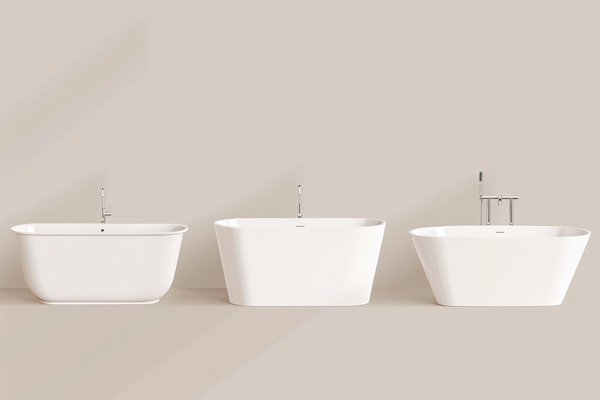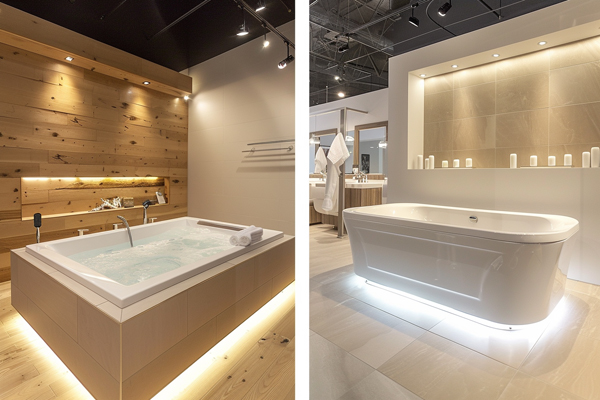Struggling to pick the right bathtub size? This guide breaks down dimensions and helps you measure accurately for your remodeling project.
Choosing the correct bathtub size ensures comfort and functionality while avoiding costly errors. Learn the essentials to make informed decisions.
Discover how to measure and select the ideal bathtub size for your home with these practical tips and insights.
Understanding Standard Bathtub Dimensions?
Choosing the wrong size bathtub leads to discomfort or remodeling headaches. Standard sizes vary by region and style, so understanding them is crucial standard bathtub dimensions explained1.
Standard bathtubs typically range between 60 to 72 inches in length and 30 to 32 inches in width, depending on the type.
Most homes feature alcove bathtubs, which fit snugly into three-sided recesses. However, freestanding and drop-in models require more space.
Common Dimensions for Popular Bathtub Styles
| Bathtub Style | Length (inches) | Width (inches) | Height (inches) |
|---|---|---|---|
| Alcove | 60-72 | 30-32 | 14-20 |
| Freestanding | 55-75 | 27-32 | 15-20 |
| Drop-in | 60-80 | 32-42 | 15-20 |
These sizes serve as a reference when planning your bathroom remodel or upgrade.
Typical Bathtub Dimensions Explained?
Remodeling can be tricky without understanding bathtub dimensions. Knowing the averages helps avoid compatibility issues.
The average bathtub length is around 60 inches, accommodating most adults comfortably while conserving space. average bathtub dimensions2.
Alcove bathtubs dominate most homes due to their compact yet functional design. Freestanding options provide an aesthetic upgrade for larger bathrooms.
Size Comparison of Bathtub Categories
| Category | Compact | Standard | Oversized |
|---|---|---|---|
| Length (inches) | 45-54 | 55-65 | 66+ |
| Width (inches) | 28-30 | 30-32 | 32-36 |
| Ideal Usage | Small spaces | Average users | Luxurious feel |
Knowing these distinctions can guide you in selecting the best fit for your bathroom.
Bathtub Size Chart: Types and Dimensions?
Finding the right bathtub size depends on your bathroom layout and personal preferences. A chart simplifies the comparison process.
Size charts outline various bathtub types, helping you match their dimensions to your space and lifestyle needs.bathtub size chart explained3
Below is a comparison chart for popular bathtub styles and their dimensions:
| Type | Length (inches) | Width (inches) | Depth (inches) |
|---|---|---|---|
| Corner Tub | 48-60 | 48-60 | 18-22 |
| Soaking Tub | 60-72 | 30-36 | 20-24 |
| Clawfoot Tub | 60-72 | 28-32 | 14-20 |
This chart aids in identifying the best bathtub size for your unique space requirements.
Bathtub Sizes and Their Effect on Remodeling Costs?
Selecting an oversized bathtub might lead to unexpected remodeling expenses. Understanding cost implications ensures smart choices.
Larger bathtubs often increase installation costs, requiring more labor, materials, and sometimes structural adjustments.bathtub installation costs4.
Remodeling costs include demolition, plumbing upgrades, and tile work. Smaller bathtubs are more cost-effective but may not meet luxury expectations.
Cost Implications by Bathtub Size
| Size Category | Installation Cost Range | Material Cost Range |
|---|---|---|
| Compact | $800-$1,500 | $300-$600 |
| Standard | $1,000-$2,500 | $500-$1,200 |
| Oversized | $2,000-$5,000 | $1,000-$3,000 |
Being aware of these factors helps plan a remodel within budget.
Tips for Selecting the Perfect Bathtub Size?
Choosing the perfect bathtub size can be overwhelming. A structured approach simplifies the decision-making process.
Focus on bathroom dimensions, user preferences, and intended purpose to determine the ideal size.
First, measure your bathroom’s available space. Next, consider whether the tub will serve as a focal point or a practical feature.
Key Factors in Bathtub Selection
- Bathroom Layout: Evaluate door swings, clearances, and pathways.
- User Needs: Ensure the tub suits both adults and children.
- Purpose: Luxury soaking or daily practical use?
Balancing these considerations leads to a successful selection.
Step-by-Step Guide to Measuring a Bathtub for Replacement?
Incorrect measurements complicate replacements. A systematic approach ensures precision and compatibility.
Measure length, width, and height of the existing space to confirm compatibility with the new tub. bathtub measurement guide5.
Steps for accurate measurement:
- Length: Measure from one end of the tub to the other.
- Width: Measure from the back wall to the front edge.
- Height: Measure from the floor to the top of the tub.
These dimensions determine whether adjustments to plumbing or space are required.
Common Questions About Bathtub Sizes Answered?
Unanswered questions can delay decisions. Addressing common doubts builds confidence in your choices.
What’s the difference between soaking tubs and standard tubs? Soaking tubs are deeper, offering a more immersive experience.
Many buyers also ask about fitting a large tub in a small bathroom. With creative layouts, compact freestanding tubs can be a solution.
Conclusion
Accurate measurements and careful planning ensure your bathtub choice fits both your bathroom and your needs.
















